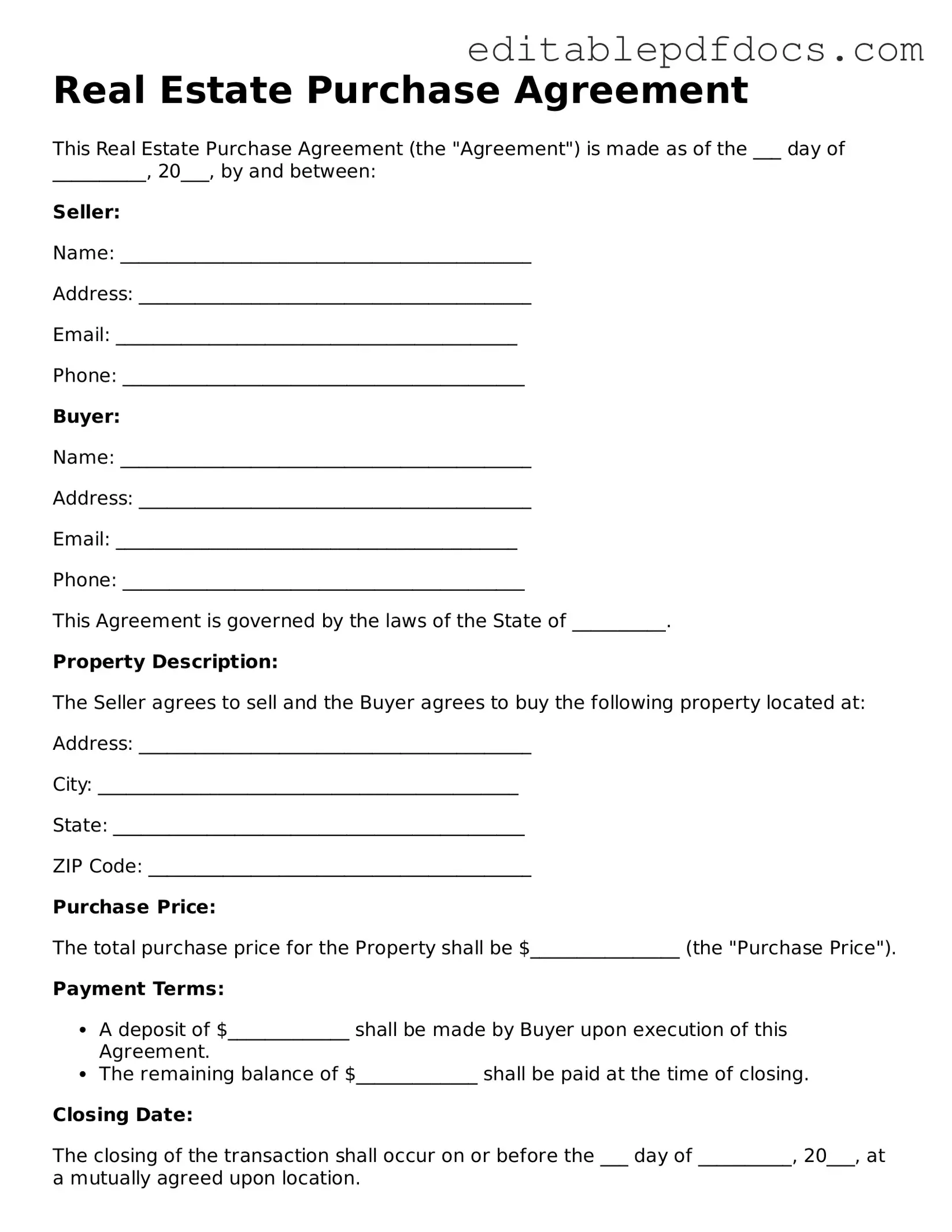When filling out a Real Estate Purchase Agreement, many individuals make common mistakes that can lead to confusion or complications later on. One frequent error is failing to include all necessary parties in the agreement. It’s essential to ensure that all buyers and sellers are clearly identified. Omitting a party can create legal issues down the line.
Another common mistake is neglecting to specify the property address accurately. A vague or incorrect address can lead to disputes over which property is being sold. Always double-check that the address is complete, including unit numbers if applicable.
People often overlook the importance of detailing the purchase price. It's not enough to simply write a number; the agreement should clearly state the purchase price and any deposits required. This clarity helps prevent misunderstandings between parties.
Additionally, many individuals fail to include contingencies. Contingencies protect buyers and sellers by outlining conditions that must be met for the sale to proceed. Without these clauses, you might find yourself in a difficult situation if issues arise during the transaction.
Another mistake involves not specifying the closing date. This date is crucial for both parties, as it marks when the ownership of the property will officially transfer. Leaving this date open-ended can lead to confusion and potential delays.
People sometimes forget to review the financing terms. It’s important to clarify how the purchase will be financed, whether through a mortgage, cash, or other means. This detail can significantly impact the transaction process.
Many buyers and sellers also fail to include a detailed description of any personal property that is part of the sale. Items like appliances, fixtures, or furniture should be explicitly listed to avoid disputes later on.
Finally, not seeking legal advice can be a significant oversight. While it may seem unnecessary, having a professional review the agreement can help catch mistakes and ensure that all terms are fair and legally sound.
